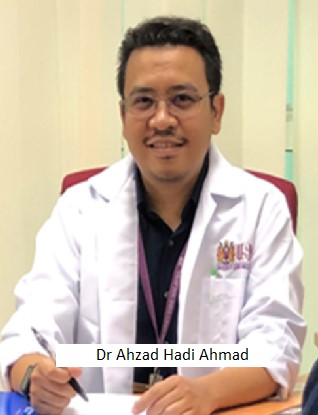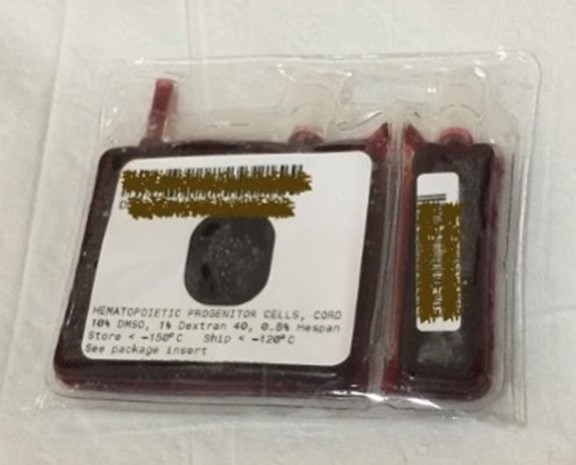Dr. Isya Fatimi bt Anwar Malik & Dr. Ahzad Hadi bin Ahmad
Regenerative Medicine Cluster, IPPT USM
Did you hear about the Euro 2021 semi-final football match between England and Denmark last July in Wembley? I bet most of you remember that England went on to win the match and moved on to the finals against Italy. What you probably didn’t know was that there was a football fan who gave up his tickets that he won to the match to donate haematopoietic stem cells. His name is Sam Astley.
So, what is haematopoietic stem cell donation, and why did Mr. Astley decide to give up a once in a lifetime chance to watch the Euro 2021 semi-final?
What are stem cells?
Haematopoietic stem cells are pluripotent, meaning they have the potential to differentiate into any lineage of our blood system. Each one of us have stem cells in our bone marrow and blood, whose function is to allow the renewal of our red cells, white cells, and platelets.
Stem cells can be transferred between individuals. This procedure is called stem cell transplantation. It is performed to replace a patient’s diseased marrow cells with those from a healthy donor, restoring the body’s ability to produce red cells, white cells, and platelets.
Haematopoietic stem cells can be collected either from the bone marrow, peripheral blood, or cord blood. It can be collected either from a sibling, a related donor, or an unrelated donor.
What you need to know about haematopoietic stem cell transplants
Patients with blood disorders such as leukaemia and thalassaemia have dysfunctional bone marrow.
Leukaemia is a type of blood cancer, causing the production of high levels of abnormal white cells by the bone marrow. It is typically treated with high dose chemotherapy, however there is a risk of relapse if the disease is not eradicated completely. Thalassaemia, which is common in Malaysia, is a hereditary condition that causes severe anaemia among patients. Some patients require monthly blood transfusions, and this affects their quality of life. For these patients, the only cure available is a stem cell transplant.
What is important in stem cell transplantation is for the donor and patient to ‘match’ as closely as possible. A match is when the donor and patient have similar cell surface proteins, called human leukocyte antigen (HLA). These HLA markers are used by the body’s immune system to differentiate between its own cells and foreign cells, thus allowing it to protect itself from invaders such as viruses. Hence, it is important to have an HLA matched donor, so that the patient’s body does not attack the transplanted donor cells.
All humans have a unique set of HLA, inherited from each parent. That is why the best match are often found in siblings from the same parents. However, in 70% of patients, there are no matched siblings or relatives available, requiring a search for a matched unrelated donor.
Interestingly, due to evolution history, people within the same race and ethnicity have similar combination of HLA markers. Therefore, it is common to have a donor with the same race and ethnicity as the patient. Hence, having a diverse database consisting of minority donors as well as donors of mixed ancestry is crucial to ensure patients of all background can find a match and have a transplant to survive.
Dedicated registries have been set up around the world for this purpose, such as Anthony Nolan in the United Kingdom, Tzu Chi Marrow Donor registry in Taiwan, Malaysian Stem Cell Registry (MSCR) and the public Cord Blood Bank in Malaysia. These registries recruit stem cell donors, perform and record each donors’ HLA typing in a database allowing ease of search.
MSCR was established in December 2000 in the Institute for Medical Research (IMR). It is responsible in recruiting donors for peripheral blood and bone marrow stem cell donation. It also performs the HLA typing for each donor and records them in the registry.
The public Cord Blood Bank was established in the National Blood Centre in 2003 and is responsible for the recruitment, collection, and storage of cord blood stem cells. Collection is done in selected public hospitals in the Klang Valley. The units are processed, HLA typed, cryopreserved, and stored in the National Blood Centre.
How can you become a donor?
Healthy Malaysians between 18-50 years old are encouraged to pledge as a peripheral blood stem cell donor. Chances of a patient finding a suitable match in the registry increases if the number of pledged donors is high. If you are considering donating, visit the MSCR facebook page to find out about their donation campaign locations. Alternatively, you can contact them at 03-33628384 or malaysianstemcellregistry@gmail.com to make an appointment at their office in Setia Alam.
If all the criteria are met, you will be required to fill up a consent form and a questionnaire. You will be given accurate and up to date information regarding the process of donation by medical personnel. A blood sample will be taken for HLA typing, and if a patient is found to be a match with you, you will be contacted in the future.
Figure 2: Cord blood unit prior to infusion into a patient





